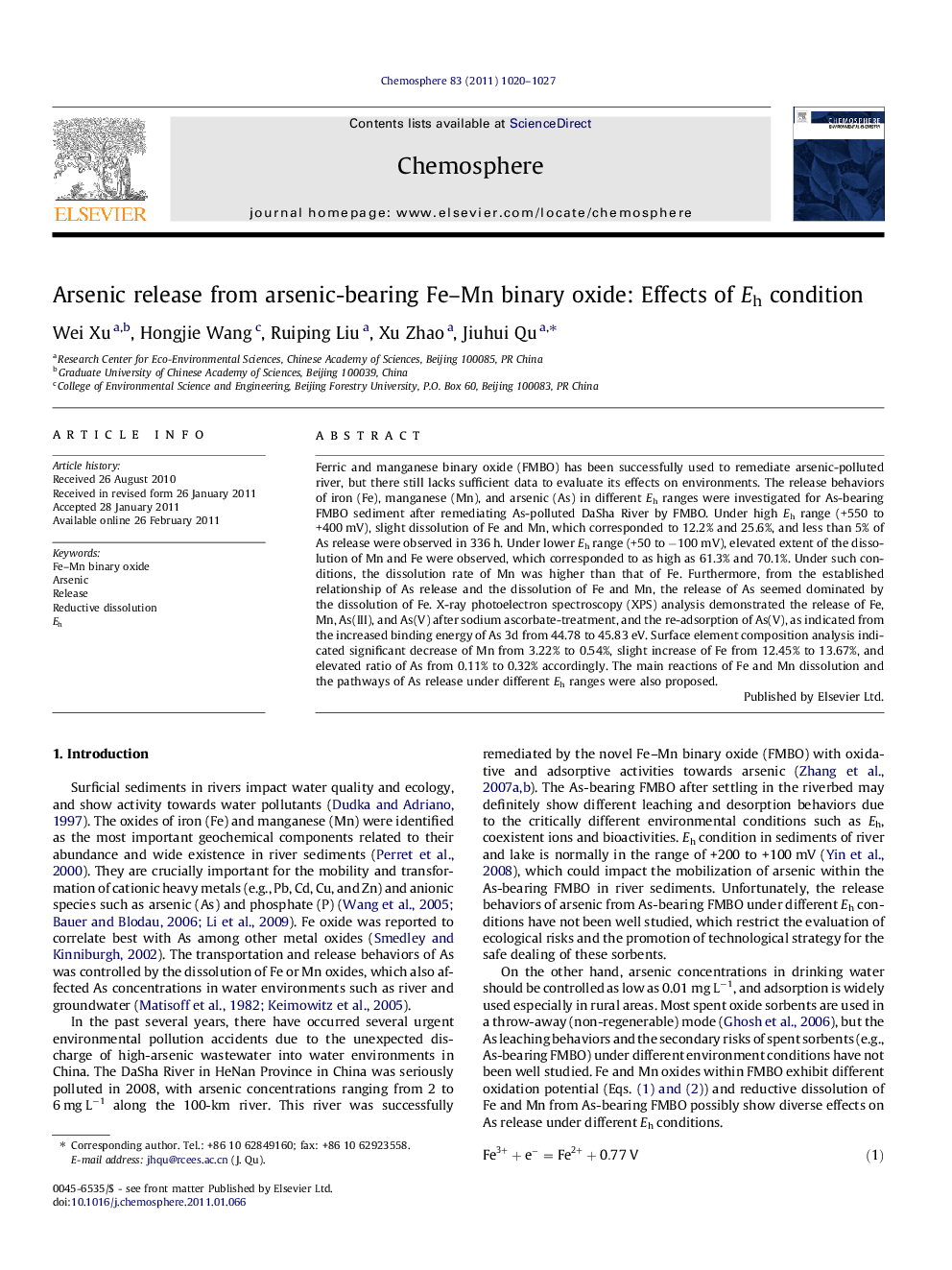| Article ID | Journal | Published Year | Pages | File Type |
|---|---|---|---|---|
| 4411285 | Chemosphere | 2011 | 8 Pages |
Ferric and manganese binary oxide (FMBO) has been successfully used to remediate arsenic-polluted river, but there still lacks sufficient data to evaluate its effects on environments. The release behaviors of iron (Fe), manganese (Mn), and arsenic (As) in different Eh ranges were investigated for As-bearing FMBO sediment after remediating As-polluted DaSha River by FMBO. Under high Eh range (+550 to +400 mV), slight dissolution of Fe and Mn, which corresponded to 12.2% and 25.6%, and less than 5% of As release were observed in 336 h. Under lower Eh range (+50 to −100 mV), elevated extent of the dissolution of Mn and Fe were observed, which corresponded to as high as 61.3% and 70.1%. Under such conditions, the dissolution rate of Mn was higher than that of Fe. Furthermore, from the established relationship of As release and the dissolution of Fe and Mn, the release of As seemed dominated by the dissolution of Fe. X-ray photoelectron spectroscopy (XPS) analysis demonstrated the release of Fe, Mn, As(III), and As(V) after sodium ascorbate-treatment, and the re-adsorption of As(V), as indicated from the increased binding energy of As 3d from 44.78 to 45.83 eV. Surface element composition analysis indicated significant decrease of Mn from 3.22% to 0.54%, slight increase of Fe from 12.45% to 13.67%, and elevated ratio of As from 0.11% to 0.32% accordingly. The main reactions of Fe and Mn dissolution and the pathways of As release under different Eh ranges were also proposed.
Research highlights► The dissolution of Fe, Mn, and the subsequent release of As from As-bearing FMBO were largely controlled by the Eh conditions. ► In high Eh range, the reduction of Mn(IV) oxide resulted in limited As release. By contrast, the dissolution of Fe mainly occurred in low Eh range, which dominated the release and desorption of As. ► XPS results demonstrated the release of Fe, Mn, As(III), As(V) and the re-adsorption of As(V), as indicated from the increased binding energy of As 3d from 44.78 to 45.83 eV. ► Under strong reductive Eh ranges (below 0 mV), the As species transformation from As(V) to As(III) was observed, which accelerated the release of As from As-bearing FMBO.
